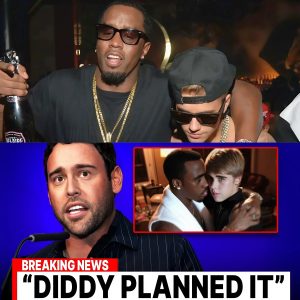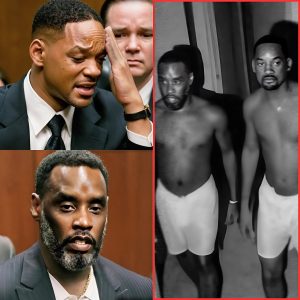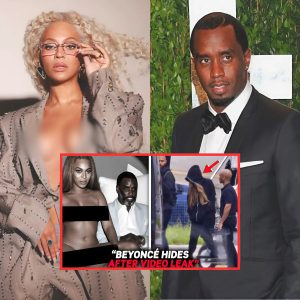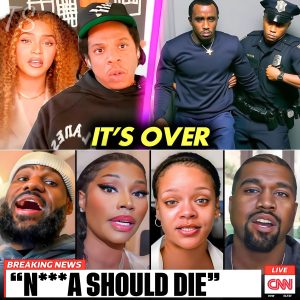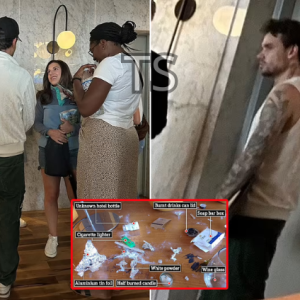THE LIGHTS AT Philadelphia’s Lincoln Financial Field dimmed, giving way to a hushed silence over the sold-out crowd of 72,543. “All levels engaged” flashed across screens on either side of the elaborate entrance ramp while The Rock’s Brahma Bull logo stood out in the center with its eyes flashing red. “99% completed” it read, and then, finally, “activated v 10.0” as sirens rang out. Now it was pitch black besides the sight of crackling lightning bolts to usher in the return of “the most electrifying man in sports entertainment.”
The WrestleMania theatrics continued for nearly a minute until The Rock’s familiar voice bellowed out: “Final Boss engaged.” Anticipation filled the air for the long-awaited return of The Rock to in-ring action. Dwayne Johnson, at long last, stood in the center of a Brahma Bull insignia engulfed in flames for over a minute, soaking it all in.
He appeared as confident as ever, and why shouldn’t he? The Rock is a man who oozes supreme self-belief; one of Hollywood’s leading men; and an all-time great wrestler with 396 million Instagram followers.
But deep down, The Rock was a bit unsure of himself. Johnson was nervous on the inside, behind the sunglasses that concealed his eyes from the millions watching worldwide.
Weeks shy of his 52nd birthday, he finally made his way down the ramp for his first wrestling match in 11 years. WWE may be scripted, but that doesn’t alter how challenging the task: a 45-minute match (second longest in WrestleMania history) that requires precise timing, elite skills and an uncanny feel for the others inside the ropes.
Those three men The Rock shared the ring with are perhaps the best WWE has to offer, full-time wrestlers at their peak: Roman Reigns, Cody Rhodes and Seth Rollins.
The Rock, known for his impressive physique, needed to be in wrestling shape to keep up with three far younger athletes. And as he prepared himself during a boxing-style training camp in the months ahead of April’s WrestleMania, one scene from the classic first Rocky film permeated his consciousness: “I just want to go the distance.”
This wasn’t hyperbole, but a realistic fear for Johnson, who suffered a trio of severe injuries in his previous match, a 2013 WrestleMania main event vs. John Cena. A torn abdomen, sports hernia and torn abductor muscle hampered a 40-year-old Johnson at WrestleMania 29. This time, he willed it all to go differently, even if doubt crept in at the top of that entrance ramp.

The same fear that once crippled the fictional Rocky character as he lay in bed alongside Adrian on the eve of his heavyweight championship match vs. Apollo Creed.
“I felt like that was a representation and a reflection of what I was feeling because as you know, in pro wrestling, there is no take two, you get one night, one shot and one opportunity,” Johnson told ESPN. ” … Leading up into WrestleMania, the training camp, the pressure, the expectation, the deliverable, everything, that quote kept coming back to my mind, which was, ‘I just want to go the distance’ and going the distance meant I knew that we had almost an hour planned, which as you know, is a long f—ing time.
“I also had something to prove to myself. … It’s always you vs. you. So that’s something to prove to myself that I can do it and put in the work and put in the training camp and rely on my dance partners in the ring in Cody and Seth and Roman as we all relied on each other. But yeah, I just want to go the distance.”
The Rock did just that and in spectacular fashion, delivering a memorable WrestleMania main event that easily exceeded expectations. He punctuated the proceedings by pinning Rhodes following his signature moves: The People’s Elbow and the Rock Bottom.
It was far from a foregone conclusion The Rock’s return would go off without a hitch. The task at hand was formidable: to perform at the top level befitting his status as one of the world’s famous men. He needed to avoid injury, sync his timing with the other three men in the ring without botching any moves and keep pace in a tag-team match that required supreme conditioning.
Johnson accomplished the feat and produced a fast-paced, hard-hitting headliner that perfectly set up the second night of WrestleMania, where Rhodes defeated Reigns for the WWE Undisputed Championship.
There were plenty of grueling bumps along the way, perhaps none greater than the moment near the finish when Rhodes planted him with a Rock Bottom of his own through the announcers’ table.
“The Rock is on the Mount Rushmore of wrestling,” Rhodes told ESPN. “I’ve spent a good portion of my career battling for my generation’s locker room to overtake the previously most successful era, the Attitude Era, The Rock’s era. But as we all found out in real-time watching WrestleMania, the man transcends time and our medium.
“I never questioned his passion, but there were many smarter matches for a man more than 10 years removed from the ring to take: Seth Rollins and I aren’t on the easy list. The speed and style of our game has changed, but he came back fiercely. If anything, he’s not even close to done. The first time we locked up, I knew he had the magic. And that’s a rare thing to find with somebody.”
THE ROCK’S IN-RING return almost materialized one year earlier.
There were plans to match him at WrestleMania 39 with longtime family friend Reigns — WWE’s top star, whom Johnson calls his cousin — but The Rock was missing the “why.”
Fast-forward to January, and the why appeared in the form of a monumental business deal. Johnson received the trademark to The Rock moniker in an agreement that also landed him on the board of the newly formed TKO Group, the parent company formed by Endeavor last summer that merged WWE and UFC.
That not only persuaded The Rock to return to the ring — along with his decades-long friendship with WWE president Nick Khan — but also brought him into the fold of the organization’s real-life decision-making. As it became clear that fans were revolting against the idea of The Rock facing Reigns at this year’s WrestleMania in a singles match, that reality was brought to life in storyline form.
The audience wanted to see Rhodes finish his story — an opportunity denied when Reigns defeated him at WrestleMania 39 — so The Rock turned heel and leaned into his board position.
Thus, The Final Boss character was born, and launched into a program with Reigns, Rhodes and Rollins.
Former WWE women’s champion Becky Lynch watched the main event match from Gorilla position (the production area behind the curtain named for Hall of Famer Gorilla Monsoon.) She struck up a friendship years ago with Johnson, who mentored Lynch and landed her a cameo on his NBC biographical sitcom “Young Rock.”
The Irishwoman grew up admiring The Rock — “the charisma, the entertainment, everything about him” — and she now had a backstage seat for his WrestleMania return against Rollins, who is her husband.

“His comments to the ref, abusing that power as a character and saying, ‘You count, you’re fired,’ I think that was one of those things that stood out to me the most because it was just so beautiful, so perfect,” Lynch told ESPN. “It wasn’t supposed to be a no-disqualification match, and then it became one because … I have the power to do that. It was great. His whole character just worked so perfectly there.”
The Rock’s heel persona gave him the creative juice to push the envelope on screen with plenty of expletives, part of an edgier storyline where he belittled Rhodes at every turn. Those taunts extended to social media, where The Rock would berate Rhodes. He even drew blood before their ‘Mania meeting. The Rock was all-in on his WrestleMania return.
There was never a doubt Johnson would excel in the lead-up — he is perhaps the most charismatic WWE star in history — but he still needed to deliver in the ring.
“Father Time doesn’t do many jobs,” Bruce Prichard, executive director of WWE’s creative writing team, told ESPN. “I thought that Rock kind of kicked his ass.”
Johnson prepared for his match over a 12-week training camp in Los Angeles and Hawaii after WWE shipped him wrestling rings (along with one on the East Coast).
“You can be cosmetically in shape,” WWE Hall of Famer Michael “P.S.” Hayes, who helped supervise the action, told ESPN. “But then there’s ring shape, and those are two different things. … He really surprised me that first session in L.A. and then even more the next day.”
Hayes produced the match, along with The Rock’s two previous matches vs. Cena at WrestleMania 28 and 29.
“I do think he was way more ready this time,” Hayes said. ” … He really knew that if he wasn’t ready, this could really blow up in his face. … I think he knew deep down that this [match] can be really f—ing good. Or if I’m not [ready] it can be really bad because there’s always people wanting to s— on you. It’s America. They want to see you fail.”
Despite all the hard work in camp around his busy schedule, Johnson knew he couldn’t push too hard. One serious injury and all the work would be for naught.
CM Punk’s hopes for a WrestleMania main event were extinguished after he suffered a torn triceps at January’s Royal Rumble. The Rock, especially at his age, needed to be “really smart with all the physicality in the ring.”
“The training camp, as intense as it was, as hard as it was, as physical as it was, we still couldn’t go 100%, couldn’t even go 75%,” said Johnson, a third-generation wrestler whose father Rocky Johnson was a WWE tag-team champion. ” … At times I would go 50% and 50%, is better than nothing. However, when you go 100% in that world of pro wrestling, especially when you have 45 minutes of match that requires you to fight inside the ring and then outside the ring and then into the crowd, there’s nothing that could replicate that.”
THE ROCK PACED around the ring in a black vest with a gold Brahma Bull and “Final Boss” in red letters. In his hand was the “People’s Championship” that Muhammad Ali’s widow, Lonnie, had gifted him one night earlier at the WWE Hall of Fame ceremony. Johnson continued to jitter around the ring before he settled into the corner alongside Reigns.
When ring announcer Samantha Irvin called out, “from Miami, Florida, weighing 285 pounds,” The Rock finally found peace — and remembered exactly who he was. “All the nerves left my body, and all I could do was just close my eyes and breathe in the mana right in the corner, and that’s what I did and it all went away,” Johnson said, referring to the term that has meant so much to his Samoan culture growing up in Hawaii, that supernatural feeling of power that permeates the universe and everything in it.
With his introduction complete, those familiar “Rock-y” chants filled the air.
“I was very nervous about it, and the anxiety level was at a nice clip going in,” said Johnson, whose first WrestleMania appearance was in 1997. “And usually if you have anxiety, you have nerves with something big like that, that you poured your heart and soul into, that you have to go out and you have to perform and you get one shot, one take, that’s it.
“If you have a pulse, you’re going to have those nerves and you’re going to have your anxiety. Even in the world of fictionalized professional wrestling, you still have 75,000 people out there and you still got to perform for 30 minutes, 45 minutes, sometimes an hour. I got out there and it was the same thing. ”
Those nerves were still taking over as he stepped through the ropes. Usually, wrestlers make their way to the center of the ring to face the hard camera as they’re being introduced.
Only The Rock didn’t, even though he was supposed to, he recalled.
“I was still in the zone, nerves, you’re scared,” Johnson said. There was good reason to feel nervous, the magnitude of the moment aside. Besides Johnson’s concern about the conditioning, there was also the timing aspect. Instead of the usual sync with one wrestler to deliver precise moves, this time, he’d need to be in tune with three.
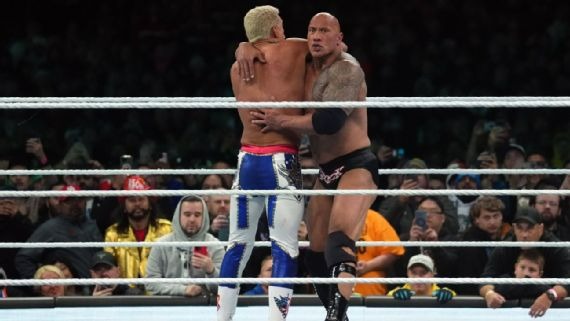
He wrestled with “Stone Cold” Steve Austin many times ahead of those three WrestleMania matches. Same for his back-to-back WrestleMania main events with Cena. During his stint as a full-time wrestler, there were usually matches with that opponent at house shows around the world before WrestleMania. But Rollins, Rhodes and Reigns? Never once had he wrestled with any of the trio.
“We were rolling the dice, and, as you saw, everything worked out, I thought, phenomenally well,” Johnson said.
But it was more so the moves he was on the receiving end of that impressed. The Pedigree. A spear from Reigns. And most of all, the Cody Cutter, a move where Rhodes springboards off the ropes to deliver a diamond cutter.
It’s a tricky maneuver that requires precise timing from both parties. The sequence — with Rock in the midst of his People’s Elbow — made it all the more difficult.
“We connected with that big Cody Cutter off the ropes, which required insane f—ing timing, which we had never done before,” Johnson said. ” … We were like, all right, we have some confidence in our abilities here. When he hit me with that and the way the crowd responded, I remember laying there and just being so f—ing happy, but I don’t want to laugh or smile.”
The Rock knew then that all the hard work had paid off. But he already had a good feeling the match would be a success when Reigns hit him with the first tag of the match.
“My very first lockup with Seth Rollins, that’s when it all clicked,” Johnson said. “It’s like you have a shift-and-click moment. It’s riding the bicycle. Then he tagged in Cody. First time ever, I locked up with Cody and the lockup feels good.
“The moment you lock up with somebody in our world of pro wrestling, you immediately know what kind of wrestler they are, if they’re going to be stiff, if they’re going to be smooth, if they’re going to be intense, if they’re going to be in control. Both guys smooth, in control.”
And after a few moments of action and crowd reaction, The Rock knew he had plenty to give.
“That’s probably at about the 5-to-10-minute mark,” he said. “I knew my conditioning was under control, and I remember saying to myself out there with him, ‘We can go an hour tonight. I’m ready to go.’”
WHEN THE ROCK, Reigns, Rollins and Rhodes walked back through the curtain to Gorilla, they all exchanged hugs, Lynch said, and received a standing ovation. Among those backstage with Lynch: WWE chief content officer Paul “Triple H” Levesque, Stephanie McMahon, Paul Heyman, William Regal, producer Bobby Roode, The Rock’s daughter Ava (who plays NXT’s general manager on TV), Hayes and Prichard.
“Sometimes you come back from a match and you just know that you’ve done something special,” Lynch said. “And everybody had that feeling.”
Johnson could finally exhale after three months of preparation and pressure. The comeback started on New Year’s Day when The Rock made a surprise return on “Raw.” The WrestleMania program kicked into high gear the next month with eight appearances on “Raw” and “SmackDown” leading up to the two-day WrestleMania event.
All eight shows sold out and generated a record gate in the market, per WWE.
The “Raw” at Barclays Center the week of WrestleMania drew the largest U.S. gate in the 31-year history of WWE’s flagship program.
TV ratings were up, too, as fans were enamored of the tweaked storyline — a pivot Johnson decided to make when the audience balked at him facing Reigns. Per WWE, “SmackDown” averaged 884,000 total viewers among the key 18-49 demographic in the first quarter, a 13% increase over last year. And WrestleMania viewership was up 41% across both nights compared with last year’s record-setting audience.
“I have never in my entire career felt more pressure and more heat to deliver than I did during this run,” Johnson said. ” … No. 1 the idea of coming back and what that means … and then being granted complete ownership of ‘The Rock’ and that entire trademark and everything with it, there’s that pressure.
“Then the pressure of pivoting on a storyline that had been brewing for two years quietly and privately. … We always knew we had the mega match with Roman and I in our back pocket. … It feels incredibly gratifying … to be able to deliver the way that we did as a team is the most gratifying thing about this entire journey.”
Two months later, Johnson returned to his role as one of Hollywood’s most notable actors. He’s portraying MMA legend Mark Kerr in “The Smashing Machine,” an A24 film directed by Benny Safdie. On Thursday evening, The Rock revealed on social media an elbow injury suffered while filming — a ruptured bursa sac — the exact thing he was able to avoid ahead of (and during) WrestleMania.
But before long, he’ll return to the place he calls home, a WWE ring. The Monday after WrestleMania, The Rock was again in that ring to confront Rhodes and set up what appears to be a main event match at next year’s WrestleMania.
“We’re on the 1-yard line to create the biggest WrestleMania of all time and the biggest match of all time at WrestleMania 41 in Las Vegas,” The Rock said. “I’ll just leave it at that, Final Boss style.”
It’s unlikely The Rock’s run will end there. He’s now on the board of TKO alongside his longtime pal Khan. After his performance at WrestleMania, there’s growing demand for The Rock to return and reignite the wrestling business as only he can.
“We believed fan expectations for his return would be extremely high,” Khan told ESPN. “What Rock was able to accomplish blew through those high expectations. … I’m certain Rock was already penciling out the next mountain to build with WWE should he have come out of WrestleMania 40 healthy, which, fortunately he did.”
Now, it’s on The Rock to do just that — to raise his level again.
“It’s one thing to announce a comeback,” Levesque told ESPN. “It’s another to go through a full training camp. But to execute the way Rock did at WrestleMania is a different level.”
